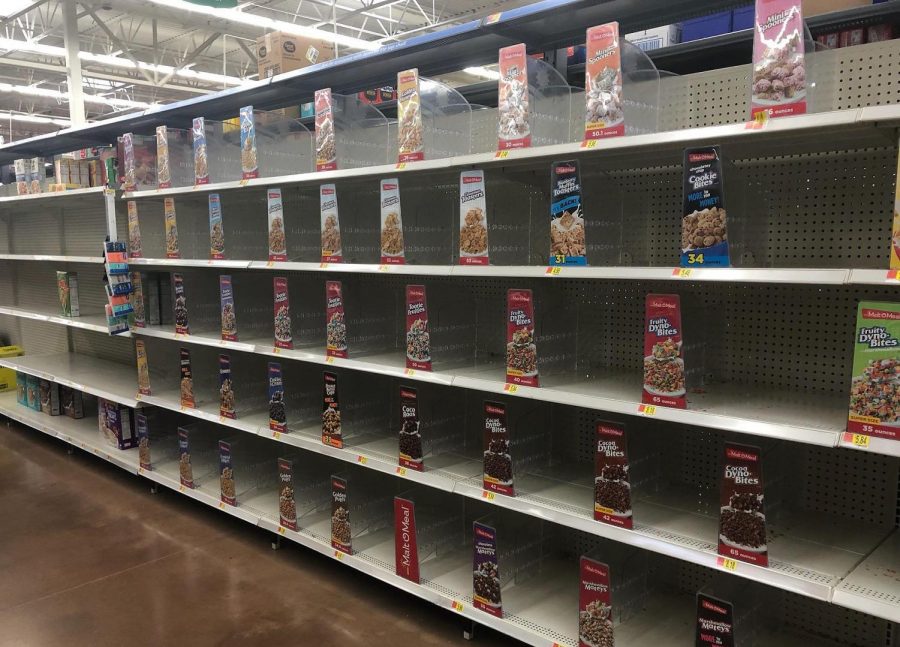Fear consumes public as Coronavirus spreads
March 24, 2020
In a time of change and uncertainty, it’s often common to panic and stress about what will come next. It may feel as though order and structure are being abandoned, but uncertainty is inevitable in times of a crisis.
As the coronavirus pandemic is sweeping across the world and everyday activities are now being confined into the walls of homes, there are a lot of questions being asked and not enough solid answers as of yet.
Grocery stores have been slammed with consumers hoarding food and toiletries, medications are flying off the shelves and the streets have been a bit more barren than normal.
Ohio University junior Taylor Shockley believes fear is one of the biggest factors in this pandemic, especially in the hoarding of necessary grocery items.
“Fear 110 percent plays into the virus so much. It’s an unknown force we are fighting and that is scaring people,” she said.
Shockley also thinks the way the public is handling the virus is varying, with some taking it more seriously than others.
“I think that shows how people have been raised and what they find important,” she said.
During his daily 2 p.m. press conference on Sunday March 22, Ohio Governor Mike DeWine issued a stay-at-home order for all citizens of Ohio. This order includes only leaving the house for essentials such as groceries, medicine, and outdoor exercise as well as going to work for certain individuals. More details of the order can be read here.
Now that real guidelines have been set, it raises the question of whether this official order will increase or decrease panic around Ohio.
Kent State University junior Thomas Olencki was studying abroad in Florence, Italy when the coronavirus began majorly affecting the Italian population. After the number of cases was increasing both in Italy and around the world, he and many other students studying abroad were instructed to return to the U.S. and self-quarantine themselves for 14 days following their return in case they had contracted the virus while abroad.
Olencki agrees with Shockley that the public’s reaction is mixed, but that fear is playing a very large role.
“I see on social media a lot of people spreading positivity about social distancing and taking advantage of social distancing. I do notice that some people just don’t care about social distancing. There are still a lot of cars on the streets so I’m not sure how many people are listening to the social distancing advice,” Olencki said.
Olencki also points out how herd mentality has played into why grocery store shelves are more empty than normal.
“People are hoarding supplies and food in the grocery stores because they are afraid. Then this fear continues into a cycle, where other people who may not be fearful of the virus see others buying a whole bunch of food. That would then cause them to want to get food and supplies before it runs out,” he said.
As the stay-at-home order is now in place, it’s up to the general public to decide how much longer they will let fear overcome them.
“I think the fear will fade,” Shockley said. “It has to as more information is known.”




